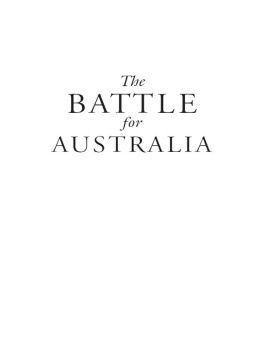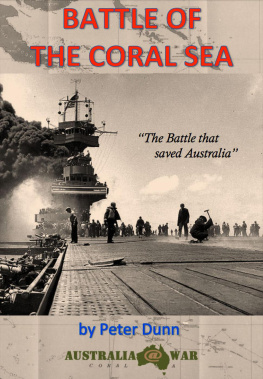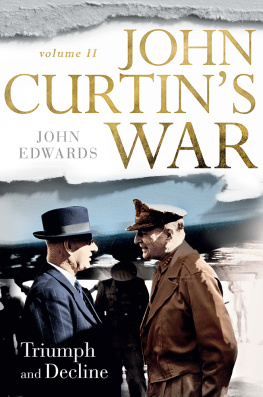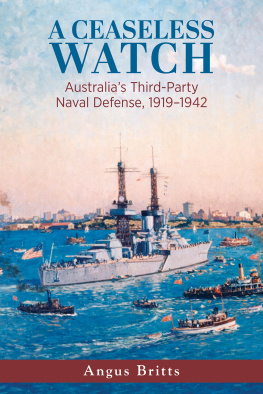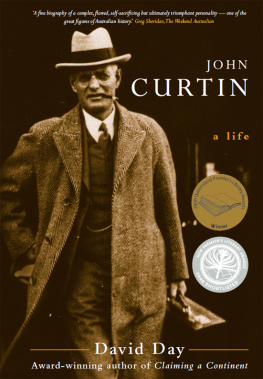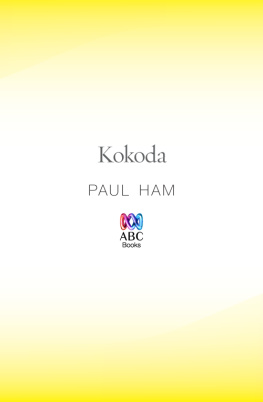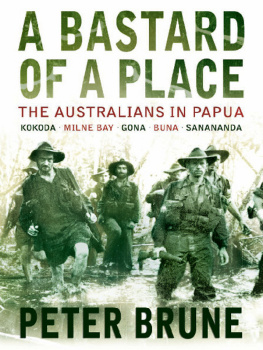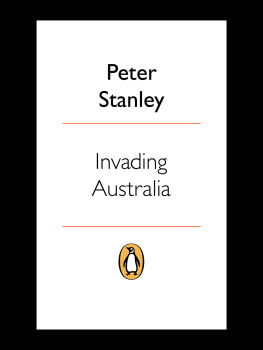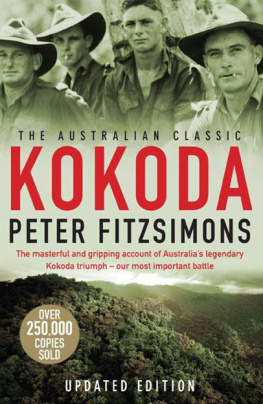
About The Battle for Australia
In early 1942 Australia lay weak and unprepared as an unprecedented succession of victories saw the rampant Japanese Imperial Army and Navy sweep southwards. The Battle for Australia had begun.
It was a battle that would be fought in Malaya, Singapore, Sumatra, Java, Borneo, Timor and Ambon, and across New Guinea and Papua, at Rabaul, Port Moresby, Kokoda, Milne Bay and Lae. It quickly spread to the skies over northern Australia and to the seas around and near Australia, including the Coral Sea.
John Curtin was the new leader of Australia at this moment of greatest peril. As Curtin rallied the country to a stance of total war, his desperate calls for aid from both Britain against the obstructiveness of Winston Churchill, who described the fight against Japan as the lesser war and the United States, produced consequences that would forever change the balance of Australias strategic relationships.
Yet Curtin was also a man mentally and physically on the brink of breakdown at this most crucial time.
The Battle for Australia, researched in Australia, Britain and Japan, is a compelling and revealing narrative history of those dangerous days.

This book is dedicated to:
Ethel Jeanie Campbell, nee Ritchie: sister of likely lads soldier Henry Ritchie and his brother, seaman David Ritchie, of Gordon in Sydney, both Australians killed at war
and
Toshiro Takeuchi of Manazuru, Japan: a peaceful young Japanese army conscript sent to Manchuria in 1945, fortunate in never being required to fire a shot in anger, who later became world president of the YMCA and, much later, my wise friend.
FOREWORD
In his fifth book, Bob Wurth has turned his attention to the history of Australia and its political leadership in the dark days of World War Two.
Here we find the compelling story of a leader fraught with anxiety, and a nation in peril. John Curtin is depicted with all his human frailties a man weighed down by physical and emotional illness, while being only too aware of the immensity of the military threat faced by Australia in 1942.
Few men would have been so tested as Curtin was during that time. Yet for all the heartache he endured, what shone through were his courage and vision. His foresight in appreciating that we could no longer depend on the United Kingdom for our national security led to his announcement of an outstanding departure from Australias international relations that would ring through future decades the alliance with the United States of America that remains the cornerstone of Australias strategic and defence policy settings to this day.
The carefully researched content of this book fills an important gap in our knowledge of this critical period of Australian history. For, seventy years after the bombing of Darwin and the invasion of New Guinea, we are still learning about what happened and just how beleaguered we were.
The Battle for Australia is also an outstanding political biography. The portrait of Curtin is evoked with drama and sympathy, and there is a fascinating counterpoint with Churchill that gives us new perspectives on the leadership of the time.
This is a significant addition to the annals of Australian history. I congratulate Bob Wurth on a scholarly but eminently readable book.
Her Excellency the Honourable Quentin Bryce, AC CVO
Governor-General of the Commonwealth of Australia
PREFACE
Images of a leader
The imagery of Prime Minister John Curtin as the resolute Australian war leader thundering in demand of a greater war effort and guiding the nation towards victory over Japan is imperfect. Curtin did successfully rally Australians. But the imagery is flawed and so too was the leader. There are other images of Curtin: visions of the prime minister wrapped in a rug, nerves on edge, energy sapped, deeply brooding in the dark of his temperance hotel room. Or of the national leader in January 1942, fleeing from the centre of the nations defence operations in Melbourne at one of the most critical times of his prime ministership to take a slow train to Western Australia to rest in what one wartime army officer called sheer desertion. And the spectre of the nations war leader on his way home, stranded by floodwaters in the barren wilderness of the Nullarbor, connected to the world only by the dots and dashes of Morse code, while the Australian territory of Rabaul in New Guinea fell to a massive Japanese invasion and the defence of Malaya crumbled.
Or Curtin, in February 1942, two days after the fall of Singapore, addressing a huge rally in Sydneys Martin Place, thumb in vest pocket, virtually shouting at the throng, warning: our fighting forces stand between us and the invasion of our country. The masked truth is that the prime minister was in acute pain, close to collapse and within the hour would be admitted to St Vincents Hospital with nervous strain, a Perth newspaper reporting Curtin overcome temporarily by the weight of war responsibility.
How accurate that headline turned out to be. Behind the faade of the war leader is the black dog of depression, afflicting Curtin since his younger years as a campaigner against military conscription. Before Curtin came to power in October 1941, his conservative predecessors had sent the cream of Australias armed forces overseas in the service of Great Britain and they exercised little control over how and, often, where the Australian forces were used. With the entry of Japan into the war, the difficult yet essential task of reasserting Australias need to defend Australia, a concept that seems unquestionably obvious today, fell to Curtin. With it came his great clashes with Prime Minister Winston Churchill. The British prime minister distorted the truth in his efforts to keep the primary focus on Nazi Germany and Italy. Here now is the popular image of a clash of wills between two Allied leaders, but what was not appreciated at the time is that both men were blighted by the same black dog.
Churchill kept from Curtin, for more than five months, the fact that the entry of Japan into the war in December 1942 had not altered Churchills Beat Hitler First doctrine. Churchill told an open session of the House of Commons in January 1942:... there is no question of regarding the war in the Pacific as a secondary operation. Yet in a secret session of Parliament three months later he said:... I now leave the lesser war for such I must regard this fearful struggle against the Japanese and come to the major war against Germany and Italy.
As Japan quickly occupied a vast arc of territory generally northwards of Australia, Curtins fear of an invasion of Australia became a very real image in his mind and a recurring nightmare. Because he had followed Japans brutal subjugation of the Chinese people, and then the Indo-Chinese, he knew it was likely that Australia would be next. Senior American officers in Australia and some in Washington, and Curtins defence chiefs, agreed. But Churchill was determined to keep the focus on Germany. Do you think you are in immediate danger of invasion in force? he asked Curtin, commenting condescendingly, It is quite true that you may have air attacks but we have had a good dose already in England without mortally harmful results. He later said: We do not see here that the Japanese would get great advantages by invading Australia in force.
Yet privately Churchill told King George VI at Windsor Castle, Burma, Ceylon, Calcutta and Madras in India, and part of Australia, may fall in to enemy hands. Meanwhile Australias governor-general Lord Gowrie revealed to the king:... people are realising at last that attack, or invasion of Australia, is a possibility that may occur in the near future. In fact Churchill agreed that Japan would try to establish bases in northern Australia, as he told the secret session of parliament, but not Curtin: No doubt the Japanese will do their utmost to threaten and alarm Australia and to establish lodgements and bases on the northern part of Australia in order to procure the greatest locking up of Allied forces in that continent.
Next page
